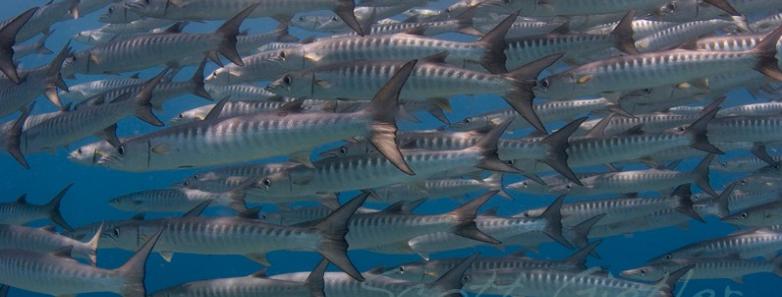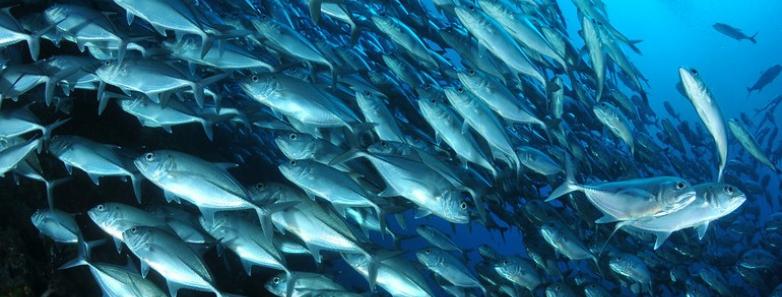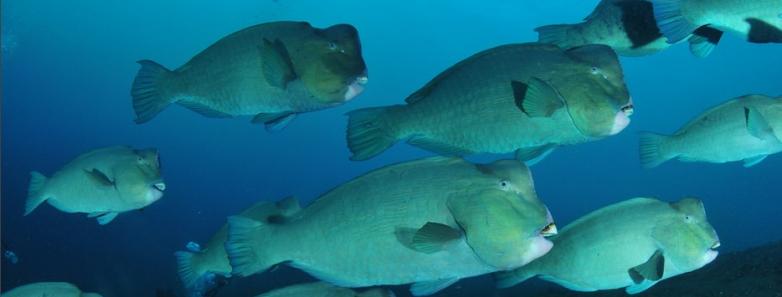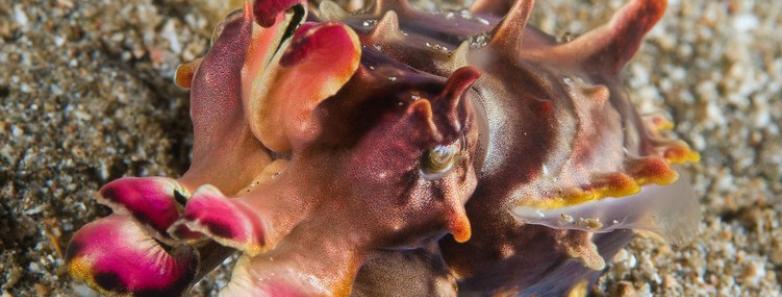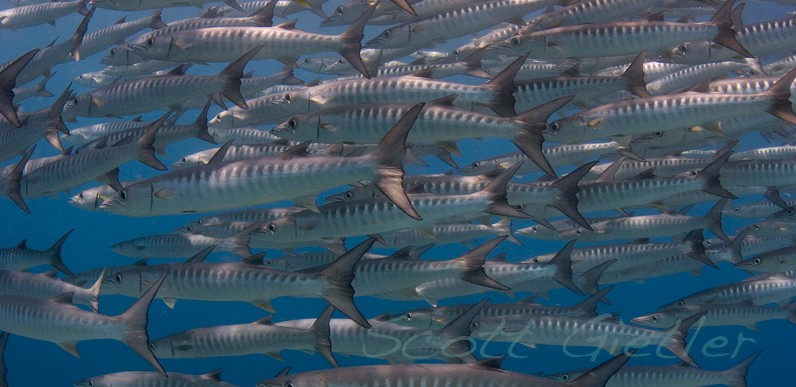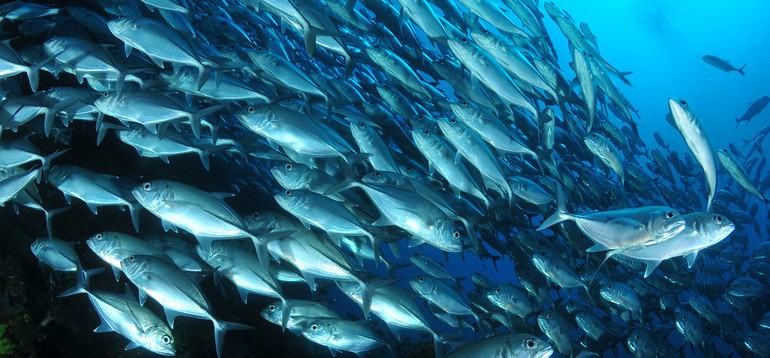SCUBA DIVING IN MALAYSIA
MALAYSIA DIVING HIGHLIGHTS
From beginner dive sites, to the world-class destination of Sipadan, Malaysia offers a vast array of indo-pacific dive sites and resort to meet all budgets.
Malaysia is a land of contradictions, from soaring skyscrapers to lush jungle, vibrant markets, and pristine beaches. And the marine environment is no different. The east coast of Peninsular Malaysia offers tantalizingly relaxed tropical sites while Malaysian Borneo, aka Sipadan, promises exciting and dramatic diving with some big ocean experiences to boot.
For more specific information on Borneo or Sipadan, or to book a dive resort, visit our guides to diving Borneo and diving Sipadan.
MALAYSIA DIVE RESORTS/LIVEABOARDS
Peninsular Malaysia has a good number of dive operators spread along its east coast, and many offer day trips to the local dive sites. Accommodation varies from high-end luxury resorts through to budget and backpacker style lodges and huts.
Liveaboard operators tend to service the Derawan Islands and Sipadan off the east coast of Borneo.
JUMP TO:
Marine Life & Environment - Top Dive Spots - Diving Conditions
INTRO TO MALAYSIA
Diving in Malaysia can be split into two main regions, Peninsular Malaysia and Malaysian Borneo. Our Borneo and Sipadan destination guides provide a comprehensive overview of diving in these areas, so this page will concentrate on diving in Peninsular Malaysia.
With calm, clear waters and protected reefs, diving Malaysia’s east coast is a pleasure. Many sites are ideal for novices or less confident divers, and healthy reefs, pinnacles, and shipwrecks will keep more advanced divers interested. Reefs boast a wide range of tropical species including reef and whale sharks, several species of turtle, and some notable macro.
These are the main dive areas in Malaysia:
- Redang Island
- With huge biodiversity and a wide range of dive options to suit all levels and tastes, Redang is a popular choice for dive vacationers and one of the busier east coast islands. Offering beach dives, challenging deeper dives, coral gardens, walls, and some superb macro, Redang has it all. The northern sites tend to have the healthiest coral growth, with impressive fish life and some exciting topography, while further south the muck sites come into their own. Sites on the southern side of the island tend to experience stronger currents and are therefore better suited to experienced divers.
- Perhentian Islands
- These archetypal tropical islands boast some of the most beautiful stretches of beach in Malaysia, although they can become busy during peak season. There are plentiful accommodation options, from high-end resorts through to huts on the beach. The marine life around the islands is rich and diverse, protected within the Terengganu Marine Park. Twenty or so dive sites scattered around the small archipelago are easily accessed by speed boat and offer calm, relaxed diving suitable for all levels. Outside peak season, most sites will be void of any other divers. Expect to spot a wide variety of tropical reef fish, numerous pelagic species, plenty of turtles, and some reef sharks on most dives. There are also a couple of shallow wrecks to explore, and the whole area is ideal for snorkelers.
- Lang Tengah Island
- Sandwiched between the larger resort islands of Redang and Perhentian, Lang Tengah is less touristy than its neighbors and as such offers quieter dive sites in a peaceful setting. Despite its small size, the island boasts 12 dive sites ranging in depth from 23 to 85ft (7 to 26m). As well as the standard array of tropical fish, divers can expect to spot turtles, leopard sharks, and large schools of jack and barracuda.
- Tenggol Island
- A cluster of small rocky islands and outcrops, the main island of Tenggol is one of the less-visited Malaysian islands. This peaceful retreat boasts huge and impressive coral heads in pristine condition, and some of the most unspoiled reef in the region. While it may not boast the vast quantities of fish seen at Sipadan, the marine life here is some of the best on Peninsular Malaysia. A wide range of dive sites and topography means there is diving suitable for everyone from beginners to technical divers. Shallow reef, deeper rocky sites with tunnels and swim-throughs, plentiful macro, and some impressive drift diving combine to create an excellent dive location.
- Tioman Island
- Tioman is the third largest island in Malaysia, although it is relatively undeveloped. Intriguing granite formations set the backdrop for a vibrant and healthy coral life within the protected marine park, and the coastline is dotted with numerous small wrecks. Hard and soft corals and sea fans attract a plethora of reef fish as well as some interesting macro, masses of nudibranchs, and crustaceans. While turtles are common, reef sharks are less so, although the occasional whitetip, blacktip, or coral catshark may be spotted. There are some excellent deep WWII wrecks suitable for technical divers, such as HMS Prince of Wales (226ft/69m) and HMS Repulse (187ft/87m).
- Langkawi Island
- On Malaysia’s west coast, the popular tourist island of Langkawi many not have any dive sites itself, but is a great base for exploring the nearby Palau Payar Marine Park. The island has many dive operators who will arrange day trips 18 miles (30km) to some of the west coast’s best diving. Although the sites here don’t compare to that of the east coast islands, shallow reefs festooned in soft corals, minimal current, and plentiful marine life make diving Langkawi a viable option when the monsoon renders the east coast sites inaccessible. Aside from the normal Southeast Asian reef species, there is a good chance of spotting pelagics such as jack and barracuda on most dives, as well as juvenile blacktip reef sharks in the shallows. Palau Payar is also a great area for snorkelers.
WHEN TO GO
Malaysia is best dived from March through to September.
MALAYSIA DIVING INFORMATION
MARINE LIFE & PHOTOGRAPHY SUBJECTS
There is a rewarding list of marine species to be found when scuba diving Malaysia’s healthy reefs. Green, hawksbill, and leatherback turtles all frequent the inshore islands, while blacktip and leopard sharks can be spotted patrolling just above the coral heads. Whale sharks also make an appearance between July and September around Tenggol Island.
Aside from this, a wide assortment of colorful reef fish adorn every site and large schools of snapper and barracuda add excitement and drama out in the blue. Malaysia also has a healthy macro scene, with pipefish, nudibranchs, octopus, and scorpionfish frequently spotted by those who know where to look.
For another great macro, check out Macro Heaven, Anilao.
DIVING CONDITIONS
- Water temperature: 82 to 86oF (28 to 30oC).
- Visibility: Varies depending on the season and site, 15 to 200ft (5 to 60m).
- Depth Range: 16 to 230ft (5 to 70m).
- Diving Difficulty: Suitable for all levels, including technical divers and snorkelers.
BEST DIVE SITES
Goby Garden, Lang Tengah
Stunning hard coral formations, colorful soft corals, and sponges hide a plethora of small creatures such as Christmas tree worms, minute decorator crabs, and a collection of nudibranch species. As the name suggests, hundreds of gobies hide in and amongst the rocks and coral heads.
Moonraker, Tenggol
An adrenaline-filled drift dive along deep walls and drop-offs, best suited to experienced divers. The brisk current sweeps divers along above a beautiful scenery of large staghorn and table corals, while pelagic fish dart in to hunt the plentiful reef fish below.
Tiger Reef, Tioman
Located in the channel between two small islands, this submerged pinnacle takes the form of a crouching tiger. Brisk currents sweep nutrient-rich water through the channel encouraging prolific coral and tube sponge growth, as well as a plethora of other sessile filter feeders. Abundant pelagics such as jacks, mackerel, and barracuda keep pace in the channel while millions of juvenile reef fish decorate the coral heads.
Salang Jetty, Tioman
This is a fantastic muck diving site with countless critters to discover around the jetty’s broken pillars. Night dives are particularly rewarding when the site comes alive with thousands of shrimps, cuttlefish, crabs, pipe worms, and nudibranchs to name but a few. A huge school of anchovies seeks shelter around the columns, as well as shoaling oxeye scad.
For another great muck diving destination, check out diving in Ambon.
Sugar Wreck, Perhentian
Lying in only 60ft (18m) of water, this 295ft (90m) cargo ship offers some interesting penetration into the engine room, cabins, and wheelhouse for experienced divers. Since sinking 20 years ago, the outside of the wreck is starting to show signs of coral and sponge growth, while many small fish have made their home in and around the superstructure. It's a great place for fish photography.
Tokong Laut, Perhentian
Arguably the best site in the archipelago, and certainly the most popular, this collection of pinnacles and large boulders hides all manner of marine life. The healthy corals are home to several species of anemonefish, and boxfish and pufferfish provide constant entertainment. There is also some great pelagic life here including large schools of fusiliers and snapper swirling to avoid hunting tuna and barracuda.
Palau Lima (Big Mount), Redang
Located within Redang marine park, the two sites that make up Palau Lima North and South encompass every marine environment found throughout the rest of the park. Big Mount is one of the best sites, and at a maximum depth of 115ft (35m) provides encounters with a variety of pelagic species such as tuna, barracuda, grouper, and blacktip reef sharks.
Kaca Sunken Wrecks, Palau Payar Marine Park (Langkawi)
A unique site consisting of several small wrecks intentionally scuttled between 33 and 82ft (10 and 25m) to create an artificial reef. The boats are covered in corals and attract a wide variety of fish life and critters such as octopus, crabs, lobsters, shrimp, and several decorative varieties of nudibranch.
Coral Garden, Palau Payar Marine Park (Langkawi)
On Palau Payar’s southwestern tip this popular site showcases the best of the Andaman Sea’s flourishing corals, with over 50 varieties of hard and soft coral carpeting large boulders. The site ranges in depth from 16 to 50ft (5 to 15m) so is a perfect beginner and snorkeler site. Countless small fish school around the coral heads while trevally prowl above.
BEST TIME TO DIVE MALAYSIA
Malaysia enjoys a tropical climate with air temperatures ranging from 70 to 90oF (21 to 31oC). From November through to March, the monsoon closes sites on the east coast, however, the west coast is less affected by rains and is open year-round.
April to October is the peak tourist season on the east while November to mid-April sees the most tourists on the west
Malaysia is on our list of the Best Diving in Asia. Check out the full list here.
TRAVEL INFORMATION
HOW TO GET TO MALAYSIA
Kuala Lumpur International Airport (KUL) is Malaysia’s main airport, and one of the busiest in Asia. Travelers from the US will normally transit through another Asian hub such as Hong Kong or Doha, however, a good number of airlines offer direct flights from the UK and Europe.
HOW TO DIVE MALAYSIA
Almost all diving is resort-based, with a good number of operators based along the mainland coast or on the larger islands. Small speed boats transport divers to the nearest reefs within 30 to 40 minutes, and many resorts and operators will offer diving in several areas.
OTHER THINGS TO DO IN MALAYSIA
Peninsular Malaysia is all about the tropical beaches, paradisiacal islands, and warm, clear waters. But if diving, snorkeling, and relaxing aren’t quite enough there are a good number of museums and cultural centers detailing the Malaysian people’s history and heritage. It is also worth visiting a kampung village, or a local temple or mosque.
OTHER USEFUL INFORMATION
PRACTICAL INFORMATION
- Currency: Malaysian ringgit (MYR)
- Language: Malay
- Time Zone: Malaysia Time (GMT+8)
- Electricity: 240V
GOT QUESTIONS? READY TO BOOK?
Call us today at +1-310-915-6677 or email us info@bluewaterdivetravel.com
And let us book your dream vacation!

